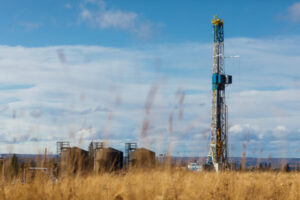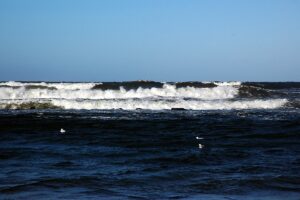The 2-week COP 26 UN Climate Change Conference will start on October 31 in Glasgow. Though methane emission reduction is not in the limelight for this session, it will be a topic for hallway conversations. In particular, taking into account that the EU strategy to reduce methane emissions was adopted one year ago in the EU. Traditionally, a reduction in greenhouse gas emissions means a reduction in anthropogenic CO2 emissions into the atmosphere. However, greenhouse gases are not only about carbon dioxide. Conventional natural gas – methane CH4 “helps” global warming much more than CO2. The CH4 potential is 25 to 84 times higher than that of CO2 – writes Mykhailo Gonchar from CGS Strategy XXI.
Methanization of the atmosphere: natural and anthropogenic factors
Most of the methane in the planet’s atmosphere is of biogenic origin, i.e., the release of gas during various processes of decay and decomposition of biological material. The main sources of the natural CH4 emissions are associated with wetlands. Anthropogenic activity is linked with methane flows into the atmosphere during the extraction of fossil fuels – coal, oil, and gas.
Today, the idea of reducing methane emissions is actively promoted. It is believed that if its anthropogenic emission is reduced, a positive reaction of the planetary climate system should manifest itself rather quickly.
And this is where the paradox emerges. Reducing methane emissions is possible only by contraction, and in the future completely stopping coal mining (methane is released during degassing of coal seams), oil (release of associated gas, containing, in addition to propane-butane fractions, the lion’s share of methane) and, in fact, natural gas, which it is.
Scientists have been sounding the alarm over rising methane emissions in the Arctic since the beginning of the 2010s. First, it`s about Russia`s territory, as it has the largest landmass in the Arctic region. Yamal, Gydan and Taimyr, where the deposit exploration takes place, are in the spotlight.
A feature of these territories is the saturation of the permafrost layer with methane hydrates. Methane hydrates are extremely unstable ice-like mixtures of methane and water which are created and exist at temperatures below + 4C and pressures above 20 atmospheres. Global warming destabilized the permafrost in the Arctic, it began to thaw, along with it, permafrost deposits of methane hydrates began to degrade, releasing large volumes of methane into the atmosphere.
Kayrros, the leading global industrial and climate watchdog platform based on information from the European Space Agency (ESA), whose Sentinel satellites monitor the Earth, estimates that methane emissions data relied on over the past years and decades, are too low. Much more methane emissions were found.
In addition, one should consider such a phenomenon as cryovolcanism, which manifested itself quite recently and was discovered precisely on Yamal. The explosion of the cryovolcano releases into the atmosphere a huge amount of methane from thawed methane hydrate strata in the permafrost zone.
Russian scientists, on the other hand, especially note the fact that local anomalies in the concentration of methane in the atmosphere over Yamal are due to the increased technogenic emission of methane in the zones of active gas production and transportation.
Nord Streams: False Paths to Climate Neutrality
Gazprom and its supporters in Europe never tire of singing the praises of Nord Stream’s low greenhouse gas emissions. Of course, nothing gets into the atmosphere from a sealed underwater pipe with a length of more than 1200 km; CO2 and CH4 emissions occur only at compressor stations on the Russian and German coasts, where gas is used as fuel for their operation. But the total effect should be assessed not along the Baltic section of the Russian gas route to Europe, but along the entire route from Yamal to the Czech Republic, that is: Bovanenkovo – Ukhta – Gryazovets – Ust-Luga – Greifswald – German-Czech border, 4700 km long, with 53 gas compressor stations burning natural gas. Its capacity is 6.5 GWT. It is equal to 4 huge coal-fired power stations like for example Vattenfall’s coal-fired power plant Moorburg in Hamburg.

https://www.gazprom.ru/f/posts/58/242195/map_bo-uh-tor_st_r19-01-17.png
But the most important thing is the emission of methane into the atmosphere in Yamal and along the route – both of anthropogenic (leaks) and natural emissions on the Arctic peninsula provoked by extractive and industrial activity. In 2020, natural methane emissions increased because of extreme heat, that caused sharp growth in emissions in much larger quantities than from the wetlands.
Experts of the International Energy Agency singled out Russia as a country where the official estimates of methane emissions are too low. In fact, Russia is one of the largest methane emitters in the world. This is recorded by ESA satellite monitoring.
A slight reduction in CO2 emissions in Germany due to the greater use of gas from supplies by Russian flows will come back to haunt with additional CH4 emissions in Yamal and on the route from Yamal to Europe. Considering that methane is ten times more aggressive than carbon dioxide, the effect looks questionable. Loud cuts in CO2 emissions with tacit acceptance of increased emissions of the more aggressive CH4 is a false path to achieving the goals of the European Green Deal. The Earth`s atmosphere is the same as over Germany and over Yamal. Thus, the arguments of the supporters of Nord Stream 2 about the environmental friendliness of the project are at least incorrect, but to put it bluntly, they are false.
In the context of the described realities, the further development of the Arctic deposits by Russia is a global environmental crime. And this applies not only to Gazprom, which is developing 32 fields on the peninsula. Novatek is also developing its production there at the Tambey group of fields with subsequent liquefaction and export of gas in the Yamal LNG project, and is implementing the Arctic LNG 2 project. Gazprom plans to raise gas production in Yamal from the current level of just under 100 billion cubic meters per year up to 360 bcm annually.
Still, even according to the official environmental reports of Gazprom, leaving aside doubts about its objectivity and completeness, in recent years, a steady dynamic of growth of CO2 and CH4 emissions is visible. Moreover, CH4 emissions are many times higher than СО2 emissions, especially in the gas transportation sector. In general, Russia is dynamically increasing methane emissions due to the production of coal, oil and gas in the Arctic regions.

https://data.worldbank.org/indicator/EN.ATM.METH.ZG?locations=RU-GB-NO-US-EU&name_desc=false
Considering the greater “aggressiveness” of methane compared to CO2, this means that the positive effect of CO2 emissions reduction in Europe will be completely “eaten away” by the negative effect of increasing volumes of CH4 and CO2 emissions in Yamal and along the route of gas transmission to the EU!
In the context of achieving climate goals, a global initiative to ban the development of fossil resources (coal, oil, gas) in the circumpolar regions of the planet, where they lie under a layer of permafrost saturated with methane hydrates, looks rational. The US, UK and the EU could become initiators. The Nord Stream 2 in this case should fall under moratorium.
Such a ban will be ignored by Russia, so it is necessary to introduce an additional tax on gas imported by companies from EU countries through Russian flows in an amount that will make investments by Russian and foreign companies in Yamal deliberately unprofitable.









